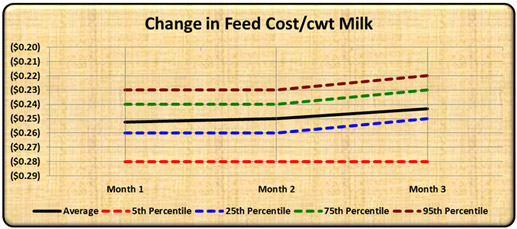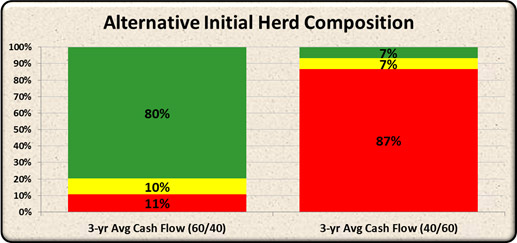Top Five Challenges to Dairy Producers
- Tight Profit Margins
- Demand Volatility for Dairy Products
- Feed Ingredient Quality Fluctuations
- New Technology and Innovation
- Environmental and Sustainability Issues
For an overview of what DSAT is, please download this article:
What a User is Saying about DSAT
"Decision Innovation Solutions assisted us in financial and production data analysis that allowed us to determine the probable range of profitability in a rather large start-up dairy. That analysis was helpful in determining the direction of our proposal."
Brian Thilges - Regional Manager, Iowa Farm Bureau Federation
Introducing DSAT - Dairy Stochastic Analysis Tool
The Dairy Stochastic Analysis Tool (DSAT) is an example of one of many Dynamic Risk-Based Modeing Services Decision Innovation Solutions offers to assist clients better quantify and plan for risk. The DSAT model is specifically designed to help dairy owners and managers better understand the production and financial challenges they consistently face. DSAT can address challenges such as feed costs and stock sources.
Feed Costs and Milk Production Trade-offs
While the goal of most dairy producers is to minimize feed costs, DIS has the ability to demonstrate that, in some cases, a higher-cost ration may prove more profitable for reasons such as improved herd health and/or increased milk production. Figure 1, below, illustrates the trade-offs between feeding a higher-cost ration (+5%) in exchange for an expected increase in milk production (+10%). On average, a switch to a higher-cost ration results in a $0.25/cwt reduction in feed costs/cwt of milk shipped over the three shown.

A New Dairy's Selection of Source Cattle
When an expansion of an existing or a new dairy is planned, the owners and managers must find a balance between milk production stability and a younger average age of lactating cattle. In other words, what is the best ratio of cows purchased from existing herds (stable milk production)versus those purchased as replacement heifers? The decision has implications for both timing and volume of milk production, because a group of replacement heifers will both calve and dry up at about the same time. This directly translates to an impact on cash flow. A ratio of 60/40 (existing herds/replacements) versus a 40/60 ratio is shown to have a significant impact on the 3-year average cash flow of a dairy (See Figure 2). Similar to a stop light interpretation, green signals favorable conditions, yellow signifies cautionary conditions, and red signals unfavorable conditions.
As shown in these few examples, Dynamic Risk-Based Modeling Services have several distinct advantages over traditional spreadsheet modeling, the most important is the ability to capture historical variability and the relationships among key variables. When a farm manager has a better understanding of the variables that have the most impact on their particular farm, they can allocate their finite resources in the areas which will yield the best risk-reducing outcome.

Let us partner with you to find your optimal solution.